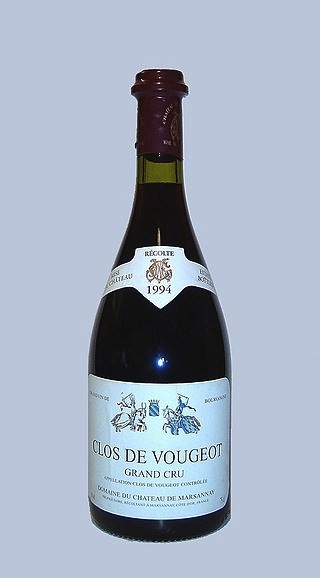Summary | Excerpt | Reviews | Beyond the Book | Read-Alikes | Genres & Themes | Author Bio

The True Story of a Plot to Poison the World's Greatest Wine
by Maximillian PotterThis article relates to Shadows in the Vineyard
 In Shadows In the Vineyard, we learn how strong a factor the concept of terroir is in winemaking. "It's the sum of the natural characteristics unique to each parcel or climat of vines: the amount of sunlight and rain an area receives, the pitch and composition of its earth, and, of course, the vines," writes Maximillian Potter. Terroir explains why different plots of land yield different kinds of grapes and therefore, different kinds of wines. Interestingly enough, the idea of terroir was first introduced to Burgundy by monks centuries ago.
In Shadows In the Vineyard, we learn how strong a factor the concept of terroir is in winemaking. "It's the sum of the natural characteristics unique to each parcel or climat of vines: the amount of sunlight and rain an area receives, the pitch and composition of its earth, and, of course, the vines," writes Maximillian Potter. Terroir explains why different plots of land yield different kinds of grapes and therefore, different kinds of wines. Interestingly enough, the idea of terroir was first introduced to Burgundy by monks centuries ago.
The Catholic church gained increasing influence in the Middle Ages and expanded their land-holdings in the Burgundy wine territories by means of generous gifts bequeathed them by royalty. Abbeys and monasteries were rapidly established, including the two largest — Cluny in 909 (held by the Cluniac order of monks), and Citeaux, in 1098 (held by the Cistercian order.)
 The monks first established their vineyards in order to produce wine for mass, but gradually viticulture became a vital part of their daily routine, and soon Burgundy wine became famous. In 1336, Cistercian monks created a walled vineyard (a clos) named Clos de Vougeot that continues to produce great wines (the wines of Romanée-Conti were made here for a while before operations were moved). The Cistercians were dedicated to studying, understanding, and improving winemaking; they were the first to realize that different grapes from different vineyards in the Cote d'Or (the northern region of Burgundy - the "golden slope") - sometimes even different vines from the same vineyard - led to dramatically different wines. The concept of terroir (and all its associated romance) was born.
The monks first established their vineyards in order to produce wine for mass, but gradually viticulture became a vital part of their daily routine, and soon Burgundy wine became famous. In 1336, Cistercian monks created a walled vineyard (a clos) named Clos de Vougeot that continues to produce great wines (the wines of Romanée-Conti were made here for a while before operations were moved). The Cistercians were dedicated to studying, understanding, and improving winemaking; they were the first to realize that different grapes from different vineyards in the Cote d'Or (the northern region of Burgundy - the "golden slope") - sometimes even different vines from the same vineyard - led to dramatically different wines. The concept of terroir (and all its associated romance) was born.
 Unlike the Romans who came before them, the monks did not believe in diluting the wines, which they considered to be God's blood and therefore sacred. The monks experimented with wines to make sure they were preserved well; arguably their greatest contribution was the thorough upkeep of records related to experiments in viticulture. Even if many documents were later destroyed during the French Revolution, enough survived to help future winemakers maintain high Burgundy standards.
Unlike the Romans who came before them, the monks did not believe in diluting the wines, which they considered to be God's blood and therefore sacred. The monks experimented with wines to make sure they were preserved well; arguably their greatest contribution was the thorough upkeep of records related to experiments in viticulture. Even if many documents were later destroyed during the French Revolution, enough survived to help future winemakers maintain high Burgundy standards.
Later on, nobility imposed their own standards on Burgundy wine - a rule imposing the cultivation of only Pinot Noir to yield better wines, for example - and to this day Pinot Noir dominates the Cote d'Or. However, there is no doubt that the foundations set by monks centuries ago determined the future course of the region's wines.
Image of an example of terroir courtesy of Friedrich Petersdorff . The steep slope, soil composition and influence of the nearby Mosel river are unique aspects of the terroir of this German wine region.
Image of Clos de Vougeot courtesy of Jebulon
Image of Clos de Vougeot wine courtesy of Arnaud 25
Filed under People, Eras & Events
![]() This "beyond the book article" relates to Shadows in the Vineyard. It originally ran in August 2014 and has been updated for the
July 2015 paperback edition.
Go to magazine.
This "beyond the book article" relates to Shadows in the Vineyard. It originally ran in August 2014 and has been updated for the
July 2015 paperback edition.
Go to magazine.
Your guide toexceptional books
BookBrowse seeks out and recommends the best in contemporary fiction and nonfiction—books that not only engage and entertain but also deepen our understanding of ourselves and the world around us.